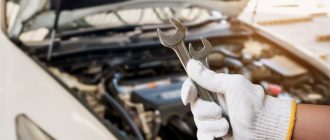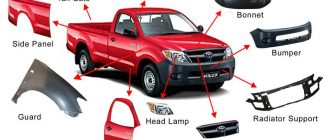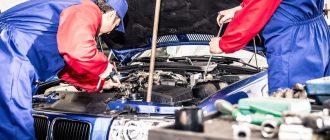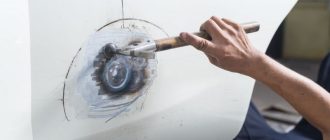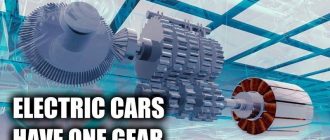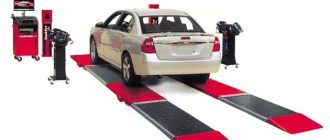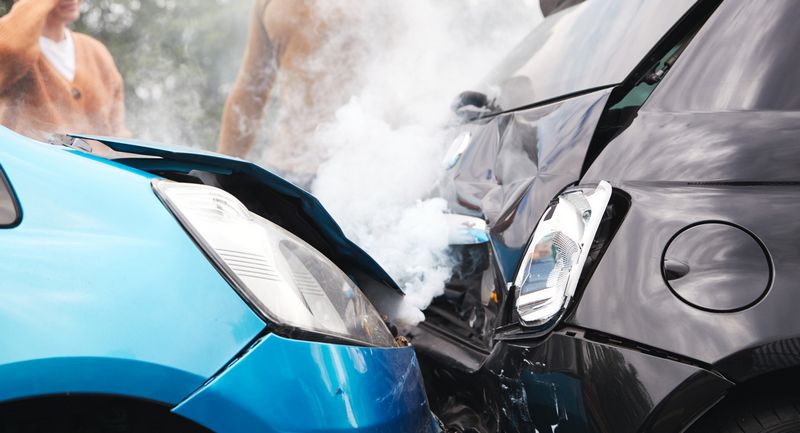
The Hidden Costs of Collision Repair
When it comes to collision repair, the costs can often be much more than meets the eye. What may initially seem like a minor accident can quickly turn into a financial burden as hidden damages start to reveal themselves.
At our repair shop, we understand the importance of uncovering these hidden costs and providing our customers with transparent and accurate estimates. We go above and beyond to ensure that you are fully aware of all the potential expenses that may arise during the repair process.
From the surface, the damage caused by a collision may seem straightforward, but beneath it lies a labyrinth of hidden repairs. Structural damages, electrical system malfunctions, and internal component replacements are just a few examples of the unexpected costs that can arise.
Our team of expert technicians is trained to carefully inspect every aspect of your vehicle, meticulously searching for any hidden damages that may be lurking beneath the surface. With their extensive knowledge and experience, they can identify even the most obscure issues and provide you with an accurate and comprehensive quote.
Don’t fall victim to the hidden costs of collision repair. Trust in our team to uncover and address every issue, ensuring that your vehicle is restored to its pre-accident condition without any unpleasant surprises.
Next time you find yourself in need of collision repair, remember the importance of choosing a trusted and reliable repair shop. We are here to make the entire process as seamless and stress-free as possible, keeping you informed every step of the way.
Don’t let the hidden costs catch you off guard. Contact us today to schedule your collision repair assessment and experience the difference of working with a team that puts your satisfaction first.
The Importance of Proper Collision Repair
When it comes to collision repair, the costs can be significant. However, the true cost of a collision repair job is not always visible at first glance. There may be hidden damages that can lead to even more expensive repairs down the line if not properly addressed.
Proper collision repair is essential for several reasons. First and foremost, it ensures the safety of the vehicle occupants. When a vehicle is involved in a collision, there may be damage to the structural integrity of the car that is not immediately evident. Failing to repair these hidden damages can compromise the overall safety of the vehicle and put the driver and passengers at risk.
Additionally, proper collision repair helps to maintain the value of the vehicle. When a car has been involved in a collision, it is likely that the resale value will be affected. However, by investing in high-quality repairs, it is possible to mitigate some of the depreciation and preserve the value of the vehicle as much as possible.
Another reason why proper collision repair is important is for the overall aesthetics of the vehicle. Even minor collisions can result in visible damages such as dents, scratches, or misaligned body panels. By choosing a reputable collision repair shop that utilizes skilled technicians and quality parts, these damages can be repaired to restore the vehicle’s appearance.
In conclusion, the costs of collision repair extend beyond the visible damages. Hidden damages, if left unrepaired, can lead to more expensive repairs in the future. Proper collision repair is essential for the safety, value, and appearance of the vehicle, making it a worthwhile investment.
Understanding the Initial Repair Costs
When it comes to collision repair, the initial costs can sometimes be deceiving. While some repairs may appear straightforward and affordable at first glance, there are often hidden expenses that can add up quickly.
First and foremost, it’s important to understand that the cost of repair will largely depend on the extent of the collision damage. Minor dents and scratches can typically be fixed with a simple touch-up or paint job, which is relatively inexpensive. However, more severe damage, such as structural repairs or component replacement, can be considerably pricier.
Another factor to consider is the cost of labor. Skilled technicians who are experienced in collision repair may charge higher hourly rates, but their expertise can make a significant difference in the quality of the final outcome. It’s crucial to choose a reputable repair shop that employs qualified professionals to ensure that the job is done right.
In addition to the direct repair costs, there may be hidden expenses that arise during the repair process. For example, some damaged parts may need to be replaced entirely, which can be costly. Furthermore, unforeseen issues or complications can arise, requiring additional time and materials to complete the repair.
It’s essential to have a clear understanding of the initial repair costs before proceeding with any collision repair. This can be achieved by obtaining detailed estimates from multiple repair shops and asking specific questions about the potential hidden costs. By doing so, you can make an informed decision and avoid any unexpected financial surprises.
In conclusion, it’s important to approach collision repair with caution, understanding that the initial costs are just the tip of the iceberg. By being aware of potential hidden expenses and seeking estimates from reputable repair shops, you can ensure that you’re well-prepared for the true cost of getting your vehicle back on the road.
Unforeseen Expenses That May Arise
While collision repair costs can already be quite high, there are several unforeseen expenses that may arise during the process. These additional costs can quickly add up and catch car owners off guard.
1. Hidden Damages: During the collision repair process, hidden damages that are not immediately visible may be discovered. This can include structural damage, electrical issues, or damage to internal components. Repairing these hidden damages can significantly increase the overall repair costs.
2. Rental Car Fees: If your vehicle requires extensive repairs and needs to stay in the repair shop for an extended period, you may need to rent a car to continue your daily activities. Rental car fees can quickly accumulate, especially if the repair process takes longer than expected.
3. Additional Parts: In some cases, additional parts may be needed to complete the repair properly. These parts may not have been included in the initial estimate and can add to the overall repair costs. It’s important to review the itemized repair bill to understand any additional parts that were necessary.
4. Storage Fees: If your vehicle is unable to be repaired immediately or you are waiting for insurance approval, you may need to store your car at the repair shop or a separate storage facility. These storage fees can accumulate over time and further increase the overall costs of collision repair.
5. Paint Matching: When repairing collision damage, it’s essential to ensure that the new paint matches the existing paint on your vehicle. Achieving a seamless paint match can require extra time and effort, which can result in additional costs for the owner.
It’s crucial for car owners to be aware of these potential unforeseen expenses that may arise during collision repair. By understanding and budgeting for these costs, car owners can be better prepared for the financial impact of collision repair.
The Impact of Parts and Labor Costs
When it comes to collision repair, the costs can go far beyond what you initially expect. One of the hidden costs that many people overlook is the impact of parts and labor costs. These costs can significantly add up and make a big difference in the total repair bill.
Firstly, the cost of parts can vary greatly depending on the make and model of your vehicle. Some parts may be relatively inexpensive, while others can be very expensive. It’s important to consider the cost of replacement parts when estimating the overall cost of collision repair.
In addition to parts, labor costs can also have a significant impact on the overall cost of collision repair. The labor involved in repairing a vehicle after a collision can be quite intensive, especially if there is extensive damage. Repair shops typically charge an hourly rate for labor, which can vary depending on the location and the shop. The more labor-intensive the repairs, the higher the labor costs will be.
Furthermore, it’s important to keep in mind that additional hidden costs can arise during the repair process. For example, if the repair shop discovers additional damage that needs to be fixed, this will increase both the parts and labor costs. It’s crucial to be prepared for these potential additional costs when getting an estimate for collision repair.
To minimize the impact of parts and labor costs, it’s essential to choose a reputable repair shop. A reliable shop will provide you with an accurate estimate and will work efficiently to keep the labor costs as low as possible. Additionally, they will source quality replacement parts at reasonable prices, helping to minimize the overall cost of the repair.
Understanding the impact of parts and labor costs is crucial when it comes to collision repair. By considering these hidden costs and working with a reputable repair shop, you can be better prepared and ensure that you aren’t caught off guard by unexpected expenses.
Hidden Costs Associated with Paint and Finishes
When it comes to collision repair, many people often underestimate the hidden costs associated with paint and finishes. While it may seem like a simple process, there are several factors that can significantly impact the final cost of painting your vehicle.
One of the hidden costs that many individuals overlook is the price of high-quality paint and materials. Using cheap or low-quality paint can result in a lackluster finish that is prone to fading and peeling over time. Investing in premium paint may initially seem expensive, but it will save you money in the long run by ensuring a durable and vibrant finish.
Another hidden cost associated with paint and finishes is the labor involved. Achieving a flawless paint job requires skilled technicians who are trained in the art of blending and matching colors. This level of expertise often comes at a price, so it’s important to factor in the cost of labor when budgeting for collision repair.
In addition, the preparation work that goes into painting a vehicle can also add to the overall cost. Before applying the paint, the surface of the vehicle must be properly cleaned, sanded, and primed to ensure optimal adhesion. These steps, although essential, can be time-consuming and require specialized tools and equipment.
Lastly, it’s important to consider the potential for additional costs associated with paint and finishes. For example, if your vehicle has extensive damage or requires significant repairs, the paint job may need to be completed in multiple stages, resulting in additional fees.
Overall, it’s crucial to take into account these hidden costs when planning for collision repair that involves paint and finishes. By understanding the true expenses associated with these processes, you can ensure that your vehicle receives the high-quality restoration it deserves.
Additional Fees and Charges to Consider
When it comes to collision repair, there are often additional fees and charges that you may not initially consider. These hidden costs can add up and significantly impact the final price of your repair. It’s essential to be aware of these fees before you commit to any repair service.
One common additional cost is the cost of replacement parts. Depending on the extent of the damage, certain parts may need to be replaced in order to restore your vehicle to its pre-accident condition. These replacement parts can be expensive, especially if they are specific to your vehicle make and model.
Another potential fee to consider is the cost of labor. Collision repair involves skilled technicians who need to dismantle and reassemble various parts of your vehicle. This process can be time-consuming and requires expertise, which can impact the labor costs associated with the repair.
Additionally, there might be hidden fees for any necessary paintwork. Repairing a collision can often involve repainting sections of your vehicle to ensure a seamless finish. The cost of the paint and the labor involved in matching the color and applying it can be another expense to consider.
Insurance deductibles and rental car fees are also important factors to keep in mind. Depending on your insurance policy, you may be responsible for paying a deductible before your insurance coverage kicks in for collision repairs. Additionally, if your vehicle is in the shop for an extended period of time, you may need to consider rental car fees to have transportation during that time.
It’s always recommended to get multiple quotes from different repair shops to compare costs and ensure that you are getting a fair estimate. Being aware of these additional fees and charges will help you make an informed decision when it comes to collision repair.
The Value of Quality Workmanship
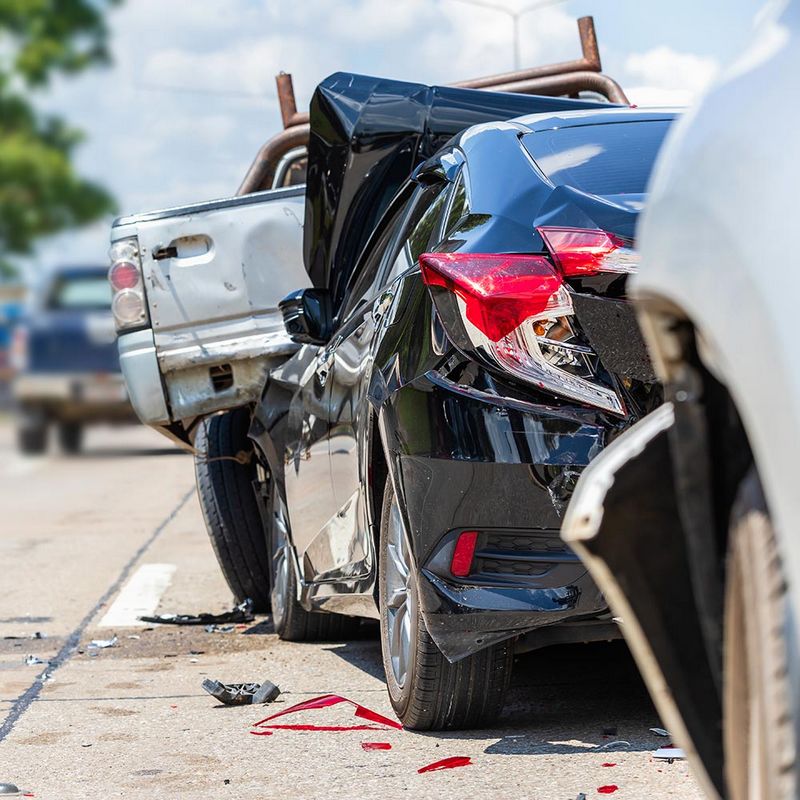
When it comes to collision repair, the hidden costs can add up quickly. From the initial estimate to the final bill, every step of the repair process has its own set of expenses. However, one cost that should never be overlooked is the value of quality workmanship.
While it may be tempting to opt for a cheaper repair option, the long-term consequences can far outweigh any initial savings. Poor workmanship can result in subpar repairs that may require additional fixes down the line, leading to increased costs and further inconvenience.
On the other hand, choosing a skilled and experienced collision repair technician can ensure that the job is done right the first time. With their expertise, attention to detail, and use of quality materials, you can have peace of mind knowing that your vehicle is in good hands.
Not only does quality workmanship result in a better repair outcome, but it can also impact the overall value of your vehicle. Whether you plan on keeping your car for years to come or eventually selling it, having a repair job performed by a trusted professional can help maintain its resale value and prevent any potential issues from affecting its worth.
So, while the hidden costs of collision repair may be undeniable, investing in quality workmanship is a wise decision that can save you both time and money in the long run. Don’t sacrifice the value of your vehicle for short-term savings.
Long-Term Effects of Shoddy Repairs
While it may be tempting to cut corners and save costs when it comes to collision repairs, it’s important to consider the long-term effects of shoddy repairs. When repairs are not done properly, it can lead to a number of issues that can end up costing you more in the long run.
One of the main long-term effects of shoddy repairs is the potential for further damage to your vehicle. If repairs are not done correctly, it can result in weakened structural integrity, making your vehicle more susceptible to future collisions. This not only puts you and your passengers at risk but can also lead to increased repair costs down the line.
Another consequence of shoddy repairs is the negative impact on your vehicle’s resale value. If potential buyers learn that your vehicle has undergone subpar repairs, they may be less willing to purchase it at a fair price. This can result in significant financial losses when it comes time to sell or trade in your vehicle.
Additionally, shoddy repairs can cause a variety of mechanical issues that can gradually develop over time. This includes problems with the engine, transmission, suspension, and other vital components of your vehicle. The costs of repairing or replacing these parts can quickly add up, not to mention the potential for breakdowns on the road.
By opting for quality repairs from the start, you can avoid these long-term effects and ensure your vehicle remains safe, reliable, and valuable. Make sure to choose a reputable collision repair shop that has a track record of providing high-quality repairs and uses genuine parts. While it may require a larger upfront investment, it will ultimately save you money and headaches in the future.
The Importance of Timely Repairs
When it comes to collision repair, one of the most important factors to consider is timing. Getting your vehicle fixed promptly after a collision can save you from hidden costs and potential risks in the long run.
Delaying collision repairs can lead to further damage to your vehicle. For instance, a small dent or scratch that might seem insignificant at first can worsen over time if left unrepaired. Moisture, rust, and other elements can seep into the damaged area, causing corrosion and structural issues.
Timely repairs can also prevent additional accidents and injuries. If your vehicle has sustained damage in a collision, it might not be as safe to drive as before. Malfunctioning brakes, misaligned wheels, or damaged suspension can increase the risk of another accident. By addressing these issues promptly, you ensure the safety of yourself, your passengers, and other road users.
Moreover, delaying repairs can also affect the resale value of your vehicle. Potential buyers may be hesitant to purchase a car with visible damage or known collision history. By promptly fixing any damage, you maintain the value and aesthetics of your vehicle, making it more appealing to potential buyers in the future.
Overall, understanding the importance of timely collision repairs can help you save money, protect your safety, and maintain the value of your vehicle. Don’t let hidden costs and potential risks accumulate by delaying repairs. Take action as soon as possible and consult a trusted collision repair specialist to restore your vehicle to its pre-accident condition.
Choosing the Right Repair Shop
When it comes to collision repair, it is important to choose the right repair shop. The hidden costs of collision repair can be significant, and selecting the wrong shop can lead to even more expenses.
Here are some key factors to consider when choosing a repair shop:
1. Reputation: Look for a repair shop with a solid reputation. Read online reviews and ask for recommendations from friends and family.
2. Experience: It is essential to choose a repair shop with experience in handling collision repairs. Look for a shop that has been in business for several years and has a team of skilled technicians.
3. Certifications: Check if the repair shop is certified by reputable organizations, such as the Automotive Service Excellence (ASE) or the Inter-Industry Conference on Auto Collision Repair (I-CAR). These certifications ensure that the shop meets industry standards.
4. Warranty: Inquire about the warranty offered by the repair shop. A reliable shop should provide a warranty for their work, giving you peace of mind in case any issues arise after the repairs.
5. Estimates: Get multiple estimates from different repair shops. Compare the prices, but also consider the quality of their work and the reputation of the shop.
6. Communication: Choose a repair shop that communicates effectively and keeps you informed throughout the repair process. Good communication ensures that you are aware of the progress and any additional costs that may arise.
7. Insurance Coverage: Check if the repair shop works with your insurance company. It is important to choose a shop that can work directly with your insurer to minimize any out-of-pocket expenses.
By considering these factors, you can make an informed decision and choose the right repair shop for your collision repair needs. Remember, selecting a reputable and experienced shop can help you avoid hidden costs and ensure that your vehicle is repaired correctly.
Insurance Coverage and Deductibles
When it comes to collision repair, understanding your insurance coverage and deductibles is crucial. Insurance coverage can greatly impact the overall cost of repairs, making it important for you to be educated about what is included in your policy.
Insurance coverage typically includes several components, including liability coverage, collision coverage, and comprehensive coverage. Liability coverage protects you in case you are at fault for an accident and damages to someone else’s property. Collision coverage, on the other hand, covers the cost of repairing or replacing your vehicle if it is damaged in a collision. Comprehensive coverage covers damage to your vehicle that is not caused by a collision, such as theft, vandalism, or natural disasters.
When it comes to deductibles, this is the amount of money you are responsible for paying out of pocket before your insurance kicks in. In the case of collision repair, you may be required to pay a deductible before your insurance company covers the rest of the repair costs. Deductibles can vary depending on your insurance policy, and higher deductibles often result in lower monthly premiums.
It’s important to review your insurance policy carefully to understand the specific details regarding your coverage and deductibles. By doing so, you can have a better understanding of what costs you may be responsible for in the event of a collision repair.
- Make sure to check if your policy covers original manufacturer parts or if it allows for the use of aftermarket parts during repairs.
- Consider discussing your coverage and deductibles with your insurance agent to ensure you have the right level of protection for your needs.
- Keep in mind that certain repair costs may not be covered by your insurance policy, such as wear and tear or pre-existing damages.
- Don’t forget to document and report any damages to your insurance company as soon as possible to expedite the repair process.
Understanding your insurance coverage and deductibles can help you make informed decisions when it comes to collision repair. By taking the time to review and understand your policy, you can ensure you are prepared for any hidden costs that may arise.
Question-answer:
What is “The Hidden Costs of Collision Repair: What You Need to Know” about?
“The Hidden Costs of Collision Repair: What You Need to Know” is a book that provides information about the additional expenses and unexpected costs that can arise during collision repair.
Why should I read “The Hidden Costs of Collision Repair: What You Need to Know”?
You should read “The Hidden Costs of Collision Repair: What You Need to Know” to gain a better understanding of the potential hidden costs involved in collision repair, which can help you make more informed decisions and avoid unnecessary expenses.
What topics does “The Hidden Costs of Collision Repair: What You Need to Know” cover?
“The Hidden Costs of Collision Repair: What You Need to Know” covers a wide range of topics related to collision repair, including insurance coverage, aftermarket parts, rental car expenses, and more.
Who is the author of “The Hidden Costs of Collision Repair: What You Need to Know”?
The author of “The Hidden Costs of Collision Repair: What You Need to Know” is an industry expert with years of experience in the collision repair field.
Is “The Hidden Costs of Collision Repair: What You Need to Know” suitable for beginners?
Yes, “The Hidden Costs of Collision Repair: What You Need to Know” is suitable for beginners as it provides a comprehensive overview of the hidden costs involved in collision repair and explains them in a clear and concise manner.
What is “The Hidden Costs of Collision Repair: What You Need to Know” about?
“The Hidden Costs of Collision Repair: What You Need to Know” is a book that provides important information about the hidden costs associated with collision repair. It covers topics such as the high price of parts, labor costs, and insurance deductibles.
Why should I read “The Hidden Costs of Collision Repair: What You Need to Know”?
You should read “The Hidden Costs of Collision Repair: What You Need to Know” if you want to be better informed about the true costs of collision repair. It will help you avoid unnecessary expenses and make informed decisions when it comes to repairing your vehicle.
